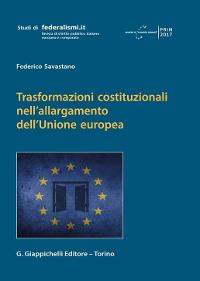
Log in or Create account
FOCUS - Reflective Judiciary N. 5 - 09/11/2018
Jurisdiction and Pluralisms: The Temptations of a Reflective Judiciary
The projection of institutional, cultural, linguistic, religious and ethnic pluralism on the judiciary seems to be leading to two different phenomena, both aimed at protecting diversity and recognizing community interests. On the one hand, some countries have been establishing special religious or/and ethnic special courts. On the other, some composite and fragmented legal systems have decided to preserve the institutional unity of the judiciary, incorporating social pluralism in the composition of judicial organs by imposing criteria for the selection of both constitutional and ordinary judges related to, for example, gender, ethnicity, territorial origin, religious or linguistic affiliation, thus exposing the myth of neutral and impersonal adjudication and constitutional decision-making. This latter phenomenon needs to be investigated in the light of its impact on judicial decision making and its ability to reduce ethnic, religious, linguistic or cultural conflict.
This area has been investigated by the research unit of Torino within the P.R.I.N. Research Project “Jurisdiction and Pluralisms (JPs)” which has been exploring the impact of the plurality of pluralisms on basic features of judicial organization and function since 2013.
This issue, in particular, brings together some contributions based upon researches presented during sessions focused on the phenomenon of particular manifestations of diversity in the exercise of the judicial function, at the International Conference “Diversity and the Courts: Judicial Pluralism in India” hosted by the University of Torino on 18 and 19 September 2014, and the International Workshop “The Judiciary in Territorially and Culturally Compound Systems: Organisation and Functions” at the University of Trento (7 and 8 May 2015). The other contributions present the results of independent research aiming at a more complete comparative picture of the various ways of achieving a certain degree of judicial representativeness in countries characterized by considerable legal and ethnic pluralism, and of diversity in the courts and judicial activism in terms of the representation of interests and needs of different segments of certain societies.
Particular attention is paid to analysis of the instruments that are used in order to increase judicial representativeness since such instruments vary considerably according to the multiple needs that the search for a more diverse judiciary aims to satisfy. The different examples and cases of achieved or desired judicial diversity are therefore analysed from the perspective of the main purpose that courts’ representativeness seeks to pursue. Three main purposes have been identified. First of all, a reflective judiciary aims to strengthen public confidence in the administration of justice; secondly, it aims to guarantee more informed judicial decisions and have a positive impact on the reasoning and style of judgments; finally, it is seen as an instrument to promote equal opportunities for women and members of ethnic, religious, and linguistic minorities in access to judicial careers.
It is difficult to identify one single and exclusive aim pursued by each experience of reflective judiciary. Rather, it emerges from the case-studies that the search for or achievement of a certain degree of judicial diversity seeks to meet multiple needs. For example, measures adopted to increase the presence of women in the judiciary have been traditionally conceived as a means of alleviating female exclusion from decision-making positions. But, at the same time, they can be also considered as a way to raise gender awareness in the courts and therefore counteract gender stereotyping and promote gender justice. Both these results are, in turn, a way to reduce the sense of isolation of courts from the community they serve and enhance the acceptability of judicial decisions.
This special issue provides an opportunity to explore the different models of reflective judiciaries all around the world, since they are related to European, American and Asian contexts: all the papers published here illustrate and analyse a variety of recent rules and practices aimed at offering a new interpretation of the idea of justice delivered “in the name of the people”. But they also inevitably leave many questions open and address areas that need to be further examined in future research that most contributors are already involved in.
NUMERO 21 - ALTRI ARTICOLI
-
ITALIA - DOTTRINA
Le potenzialità dell'azione giuridica comunale nello sviluppo prospettico della normativa costituzionale sulle formazioni sociali
ITALIA - DOTTRINAIl regionalismo differenziato alla luce delle recenti evoluzioni
ITALIA - DOTTRINAThe European Banking Authority in light of the CJEU jurisprudence
-
ITALIA - DOTTRINA
Tempo e potere di riesame: l'insofferenza del giudice amministrativo alle 'briglie' del legislatore
ITALIA - DOTTRINACompetenza del giudice ordinario e tardività dell’eccezione di arbitrato
-
ITALIA - DOTTRINA
Uguaglianza, diritti umani e vincoli di bilancio
ITALIA - DOTTRINALe strategie macroregionali dell'Unione europea



 Registrati
Registrati Login
Login
 Riforme istituzionali e forma di governo
Riforme istituzionali e forma di governo Lavoro Persona Tecnologia
Lavoro Persona Tecnologia Osservatorio di Diritto sanitario
Osservatorio di Diritto sanitario Osservatorio Trasparenza
Osservatorio Trasparenza Africa
Africa Human Rights
Human Rights America Latina
America Latina Territorio e Istituzioni
Territorio e Istituzioni Storico focus
Storico focus Scarica il Documento integrale
Scarica il Documento integrale STUDI FEDERALISMI
STUDI FEDERALISMI





15/03/2024
29/12/2023
04/08/2023
05/06/2023
30/01/2023
09/12/2022
28/10/2022
28/03/2022
02/02/2022
17/01/2022
12/02/2021
18/01/2021
13/11/2020
12/10/2020
17/06/2020
01/06/2020
18/05/2020
04/05/2020
24/04/2020
10/04/2020
27/03/2020
10/04/2020
25/10/2019
27/09/2019
15/04/2019
25/03/2019
14/01/2019
14/12/2018
16/11/2018
09/11/2018
14/09/2018
03/09/2018
22/06/2018
23/02/2018
27/11/2017
02/10/2017